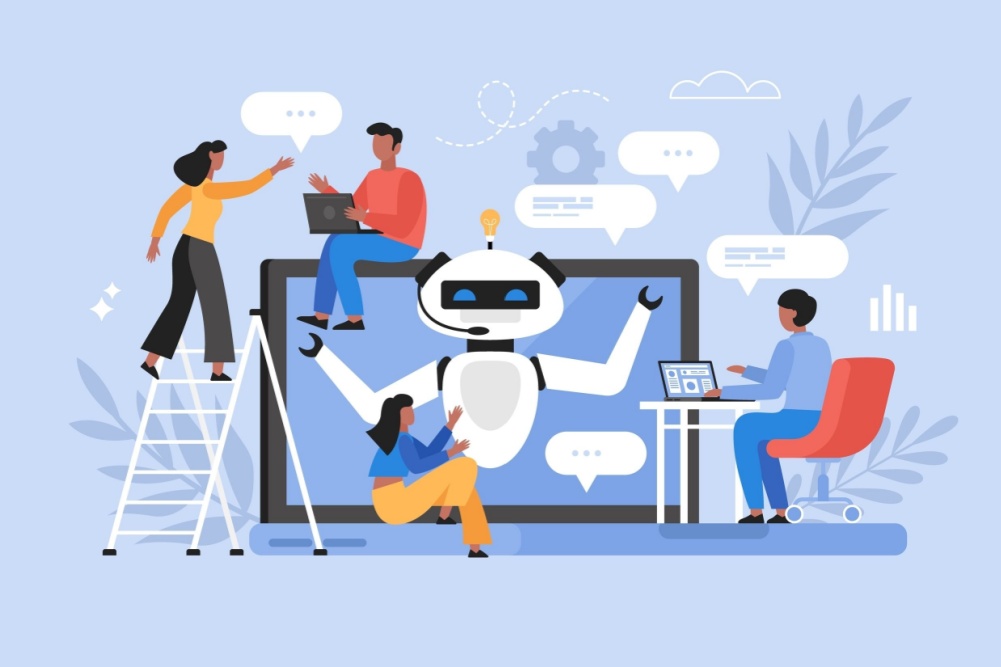As artificial intelligence (AI) continues to revolutionize various sectors, philanthropic organizations are increasingly leveraging AI to enhance their impact. However, with great power comes great responsibility. Ensuring the ethical use of AI is paramount to maintaining trust, integrity, and effectiveness in philanthropic efforts. Here are some ways organizations can navigate this complex landscape.
Transparency and Accountability
- Clear Communication: Transparency is the cornerstone of ethical AI use. Organizations should openly communicate how they use AI, including the types of data collected, how it is processed, and the purposes it serves. This will help build trust with donors, volunteers, and beneficiaries.
- Accountability Mechanisms: Establishing clear accountability for AI decisions is critical. This can involve setting up regular audits and reviews of AI systems to ensure they are functioning correctly and adhering to ethical standards. Having someone – whether a team or individual — responsible for overseeing AI ethics can also help maintain accountability.
Data Privacy and Security
- Robust Data Protection Policies: Implementing strong data protection policies is essential to safeguarding personal data. This includes using encryption, secure storage solutions, and strict access controls to prevent unauthorized access.
- Consent and Control: Ensuring that individuals have control over their data is a fundamental ethical principle. Organizations should obtain explicit consent before collecting or using personal information and provide clear options for individuals to manage their data preferences.
Bias and Fairness
- Bias Mitigation: AI systems can inadvertently perpetuate biases present in the data they are trained on. To mitigate this, organizations should use diverse datasets and regularly test their AI systems for discriminatory outcomes. Techniques such as fairness-aware machine learning can help reduce bias.
- Inclusive Design: Involving diverse teams in the design and development of AI systems can help ensure a wide range of perspectives are considered, reducing the risk of bias. This includes considering the needs and experiences of different demographic groups.
Ethical Guidelines and Training
- Develop Ethical Frameworks: Organizations should develop and adhere to ethical guidelines for AI use. These guidelines should align with the organization’s broader values and principles, providing a clear framework for ethical decision-making.
- Training and Awareness: Providing training for staff on ethical AI practices is essential. This ensures that everyone involved in AI projects is aware of the potential risks and ethical considerations, fostering a culture of responsibility and integrity.
Human-Centric Approach
- Human Oversight: Maintaining a human-in-the-loop approach ensures that humans review critical decisions. This helps to ensure that AI complements human judgment rather than replacing it, providing a safeguard against unintended consequences.
- User-Centric Design: Designing AI systems with the end-user in mind is crucial. This means ensuring that AI tools are accessible, understandable, and beneficial to the people they serve. User feedback should be actively sought and incorporated into system improvements.
Continuous Monitoring and Improvement
- Regular Audits: Conducting regular audits of AI systems helps ensure they are functioning as intended and adhering to ethical standards. This ongoing evaluation is key to identifying and addressing any issues that may arise.
- Feedback Mechanisms: Implementing feedback mechanisms allows organizations to gather input from users and stakeholders. This can help identify potential problems early and provide valuable insights for continuous improvement.
Collaboration and Standards
- Industry Collaboration: Collaborating with other organizations, industry bodies, and regulators can help develop and adhere to common standards and best practices for ethical AI use. This collective effort can drive higher standards across the sector.
- Adopt Established Standards: Following established standards and guidelines, such as those from the IEEE or other relevant bodies, can help ensure ethical AI practices. These standards provide a benchmark for responsible AI use and can guide organizations in their efforts.
An Obligation
The ethical use of AI in philanthropy is not just a technical challenge but a moral imperative. By adopting these strategies, philanthropic organizations can ensure that their use of AI is responsible, transparent, and aligned with their mission to make a positive impact. As technology continues to evolve, maintaining a strong ethical foundation will be crucial to harnessing AI’s full potential for good.





0 Comments